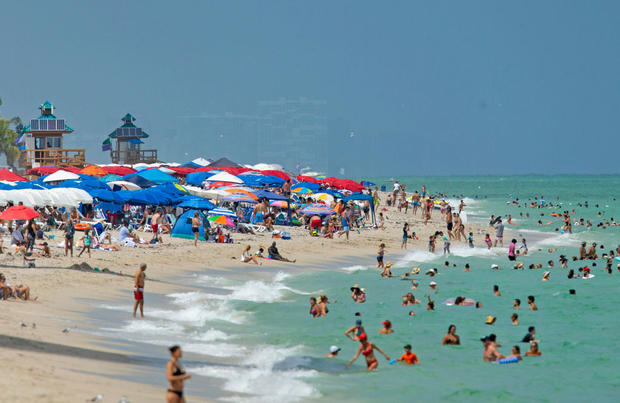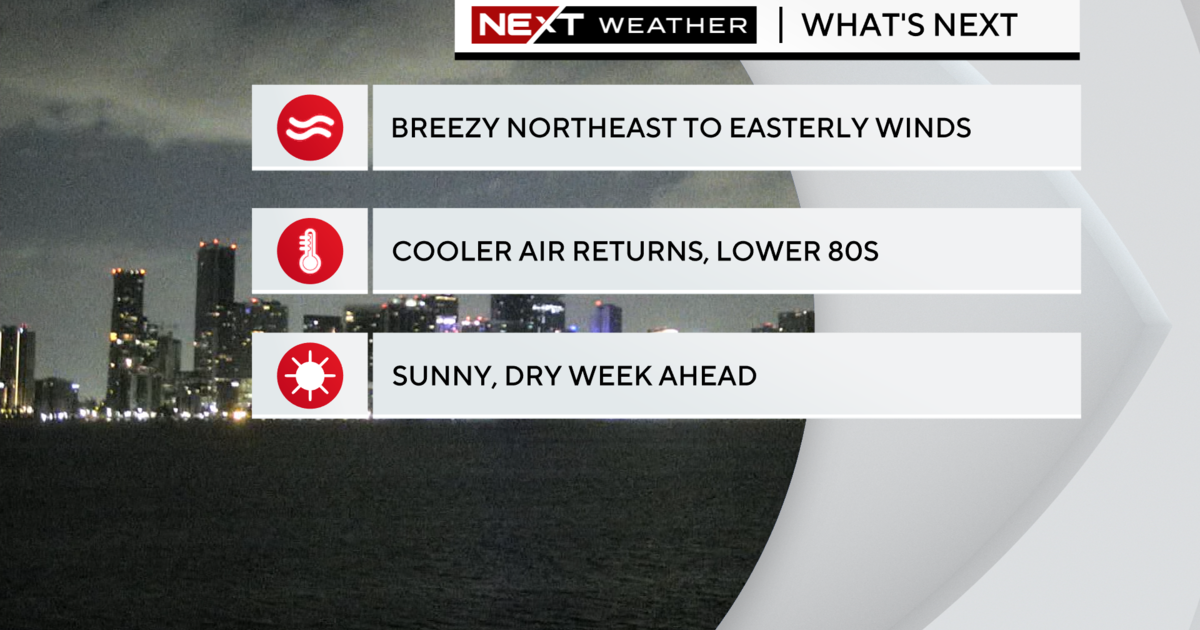Miami may be hotter than what officially reported temperatures suggest, study finds
MIAMI — Do you ever feel like it's hotter in Miami than what the weather forecast tells you? Well, there might be a reason for that.
A new study published by scientists at the University of Miami Rosenstiel School of Marine, Atmospheric, and Earth Science and Florida International University found that Miamians may experience temperatures 6 degrees Fahrenheit hotter on average than what the National Weather Service officially reports, which can feel up to 11 degrees higher with humidity.
The study — "Hyperlocal Observations Reveal Persistent Extreme Urban Heat in Southeast Florida" — was published Sunday in the Journal of Applied Meteorology and Climatology. The study suggests that this discrepancy between temperatures reported and felt has major implications for when to declare official heat advisories, the Tuesday press release reported.
"Our results indicate that heat may be underestimated as a public health hazard here in Miami," said Amy Clement, the study's lead author and an atmospheric sciences professor at the Rosenstiel School. "Urban areas have generally higher temperatures, which we call the urban heat island effect, and cities are some of the most rapidly warming places on the planet. The addition of the high humidity we have here means that the heat exposure can exceed dangerous levels."
The research team analyzed temperature and humidity data collected from low-cost sensors set up by volunteers in outdoor locations throughout Miami-Dade County where people go about their daily lives such as parks, bus stops and playgrounds.
"Our goal for this research is to help identify where investments in heat mitigation efforts, like increasing tree canopy, improving weatherization of homes, and identifying places to activate cooling centers, can have the biggest impact," said Tiffany Troxler, a co-author of the study and leader of the FIU team.
In Miami, the heat doesn't come in waves but rather a persistent fact of life during the summer due to the high humidity. This may not surprise most South Floridians but what the new data shows is that the heat can reach hazardous levels throughout the summer, while reported official temperature taken at one location — the Miami International Airport — is consistently below those levels that are officially considered "dangerous."
"As we continue to collect more and more data from throughout the county, we will get a better picture of which neighborhoods are the hottest in hopes of addressing this increasing public health hazard, which will be worsened by climate change," Clement said.
The data, collected as part of the ongoing Shading Dade citizen science heat monitoring program launched by FIU's Sea Level Solutions Center in the Institute of Environment and local nonprofit Catalyst Miami, helps scientists get a more realistic picture of the heat experienced in the city.
"Shading Dade serves as a blueprint for how researchers can partner with local nonprofits such as Catalyst Miami to engage impacted community members in learning more about their environment and provides evidence that can inform efforts to cool down the County in an equitable manner," said Mayra Cruz, a Ph.D. student at the University of Miami Abess Center for Ecosystem Science and Policy involved in the study.






